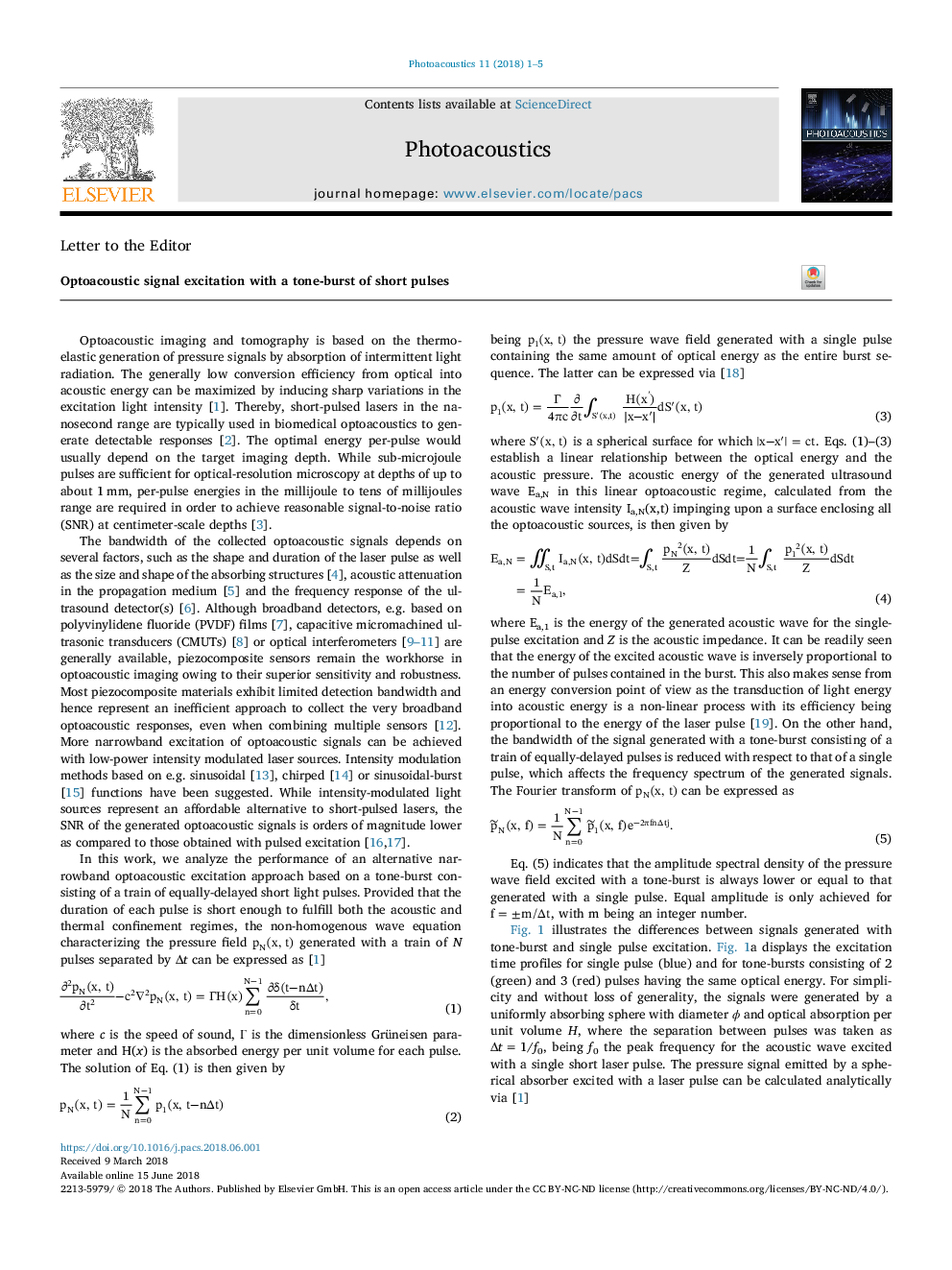| Article ID | Journal | Published Year | Pages | File Type |
|---|---|---|---|---|
| 6956742 | Photoacoustics | 2018 | 5 Pages |
Abstract
Individual light pulses with durations in the nanosecond range are most often employed in biomedical optoacoustic imaging. In this excitation regime, ultra-wideband acoustic responses are generated from tissues that cannot be efficiently captured with ultrasound transducers having a limited detection bandwidth. Here, we analyse a narrowband optoacoustic signal excitation mechanism consisting of a tone-burst of multiple equally-delayed pulses. The signal generation efficiency of single-pulse versus tone-burst excitation is compared for normal light exposure levels in the linear optoacoustic signal generation regime as well as when considering non-linearities associated with temperature increase or absorption saturation. The signal-to-noise ratio of the excited signals is also experimentally compared using a highly-absorbing ink phantom.
Related Topics
Physical Sciences and Engineering
Chemistry
Spectroscopy
Authors
X.L. Deán-Ben, D. Razansky,
